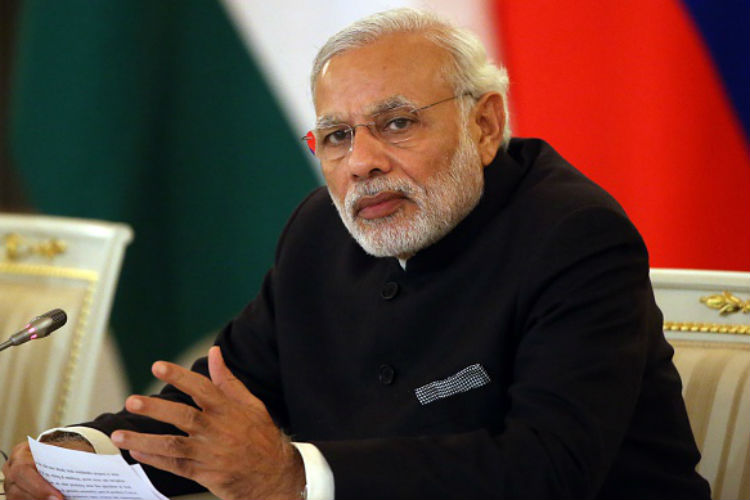
This article was last updated on December 4, 2023
Canada: ![]() Oye! Times readers Get FREE $30 to spend on Amazon, Walmart…
Oye! Times readers Get FREE $30 to spend on Amazon, Walmart…
USA: ![]() Oye! Times readers Get FREE $30 to spend on Amazon, Walmart…
Oye! Times readers Get FREE $30 to spend on Amazon, Walmart…
The alleged plot to assassinate a Sikh separatist on U.S. soil began in May, with a text message between what the American indictment says was an Indian security official and an alleged drugs trafficker.
“Save my name,” the official wrote to a man named Nikhil Gupta over an encrypted messaging application on May 6, according to U.S. prosecutors.
The official told Gupta – who the prosecutors described as an Indian national involved in drugs and weapons trafficking – about a “target” in New York. The official wanted Gupta to orchestrate the target’s murder, in exchange for getting criminal charges against him in India dropped.
While prosecutors have not identified the alleged victim, a senior administration official said, it was Gurpatwant Singh Pannun, a New York-based lawyer who leads a separatist group called Sikhs for Justice. Pannun confirmed he was the target.
“We will hit all our Targets,” Gupta replied, an apparent boast.
The exchange kicked off what U.S. prosecutors described as a six-week, and successful plot to assassinate Pannun that was made public in a Nov. 29 and sealed indictment charging Gupta, 52, with murder-for-hire.
This account of the foiled alleged conspiracy is based on the 15-page indictment filed in Manhattan federal court, which suggests U.S. law enforcement personnel had caught onto the plot shortly after it began.
On May 12, about a week after Gupta and the Indian official first exchanged messages, the official wrote Gupta again to tell him that a criminal case against him in India’s Gujarat state had been “taken care of.”
U.S. prosecutors did not name the Indian official, who they described as a government employee responsible for intelligence and security matters. A spokesman for India’s foreign ministry has said the plot was “contrary to government policy.”
Assured that his charges had gone away, Gupta went about fulfilling his side of the bargain. On May 29, Gupta asked a person he believed to be a criminal associate if he knew anyone who would be willing to carry out a “murder-for-hire” in the United States.
The associate – who is not named in the indictment – said he would check his contacts and asked for details about payment. Unbeknownst to Gupta, the associate was a confidential source of U.S. law enforcement.
The Indian official sought to rush Gupta along, warning him that the assassination should not take place while top level Indian officials visited the United States from June 20-24.
At the time, Washington and New Delhi were planning Indian Prime Minister Narendra Modi’s June visit to the USa
“Finish him brother,” Gupta wrote his associate on June 3. “Don’t take too much time.”
The next day, Gupta’s associate sent him a surveillance photograph of the plot’s target. The associate went on to introduce Gupta over text messages to the person who would purportedly carry out the murder, and Gupta arranged for a $15,000 cash handoff to the purported hitman as an advance.
“We are all counting on you,” Gupta told the purported hitman in a video call on June 12.
The purported hitman was an undercover Drug Enforcement Administration agent, the indictment says.
On June 13, the day after the video call, a grand jury meeting in secret in a federal courthouse in lower Manhattan indicted Gupta, court records show. The charges were filed under seal; Gupta would not be arrested until the end of June.
The White House found out about the plot in late July, and National Security Advisor Jake Sullivan discussed it with his Indian counterpart in early August, a U.S. official told Reuters.
A MURDER IN CANADA
As the foiled U.S. plot unfolded, another Sikh separatist, Hardeep Singh Nijjar, was killed in a Vancouver suburb on June 18 by a masked gunmen.
In a call the next day to his ‘associate,’ Gupta said Nijjar had also been a target of the plot and “some other guy did this job.” He warned the source – who he still believed to be working for him – that their target was likely to take extra precaution in light of Nijjar’s killing.
On June 22 – the same day modi visited USA. at the White House – Gupta’s Indian government handler told him that their target was “not at home.”
In urgent messages over the next few days, the official told Gupta his U.S.-based associates needed to step up their surveillance and “be ready” in case the target came back to either his home or office.
The target returned to his home on June 29, according to a message Gupta wrote the undercover DEA agent.
“Try to get this done if you have the visuals and if you are sure,” Gupta said.
The next day, Gupta traveled from India to Prague, where he was arrested, and is yet to be extradited to the U.S.
Three months later, Canadian Prime Minister Justin Trudeau said there were credible allegations that Indian government agents were linked to Nijjar’s murder, an accusation New Delhi called False.

Be the first to comment